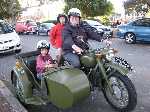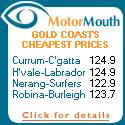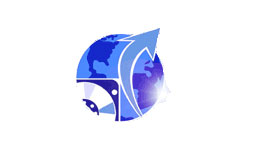1966-1969: The Stunt-riding years.
A lifetime of excellent learning packed into a few short years
1966-1969: The Stunt-riding years.
I cannot leave my time with BRMCC without discussing the Stunt Team. I am not sure exactly when the BRMCC Stunt Team began, but it was certainly in full swing before I joined the club in about January 1966. Elsewhere in the 1960s there were a couple of Army troupes which used to put on precision riding and stunt riding displays at, for example, the Edinburgh Tattoo. These were filmed and shown on the Movietone News as well as on television. The films were also borrowed and shown at motorcycle rallies. No doubt someone in the club looked at these and caught the vision to do likewise.
The Stunt bikes... The club had come to own the following bikes which were used for the Stunt Team by the time I joined: Three Harley Davidson 1942 WLA model 750cc Side-valve V-twins, One BSA OHV parallel twin (used for ramp-jumping), One Norton OHV single (also used for ramp work), and a couple of Matchless or AJS bikes used for general stunts. The club also owned a trailer built specifically for carrying the bikes carrying three bikes in channels parallel to the direction of travel (usually three Harleys), one bike in a crosswise channel in front of the three Harleys, and one in a crosswise channel at the rear of the trailer. If other bikes were needed for specific shows, they were either towed to the venue or carried in a ute. I should mention that there were other Harleys used for parts to keep the main three going and that the other bikes were taken out of service for maintenance or put back into the pool again when they had been reconditioned and were running well.
The Stunt Team were hired by the organisers of other events such as the annual Agricultural Shows which were put on by the Agricultuaral Societies of most country towns and many regional cities in those days. We performed as a drawcard event on the centre of the main oval in the showgrounds.
Disclaimer: Don't try this at home: The members of the Ballarat Rovers Motor Cycle Club Stunt Team spent countless hours in preparation and practice. All of the stunts were very well choreographed, planned and thought out so that they would be spectacular and yet safe. The riders wore special safety equipment, often out of sight underneath their outer clothing. The team always had qualified first-aid officers standing by. Every new stunt that was designed had to be passed by the leaders at practice sessions as being absolutely safe before it was permitted to be incorporated into a show.
Some of the stunts we performed were as follows:
The Wall of Fire: A pinewood wall about 6mm thick and 2 metres wide by
2 metres high was set up, splashed with kerosene or diesel and set on fire. Someone
riding a bike would then go crashing through it.
The Human Battering Ram: somebody (usually the late Jim Colligan - Jim
and his passenger Ian Thornton were unfortunately killed in a road racing outfit crash at
Bathurst many years later) lay face down along the top of the bike with his head and
helmet ahead of the front tyre and his legs around the waist of the rider. A wall
made of pine boards about 6mm thick, 2 metres wide and 2 metres high was covered with
diesel and set alight. The bike would make a good fast approach and Jim's helmet
would be the first item to smash through the burning pinewood wall.
The Hoop of Fire: A steel hoop about 2 metres in diameter was elevated on
some drums and bundles of hay or straw had been tied all around the hoop in advance.
A ramp was set up, the hoop was sloshed with diesel and set alight. One or
more riders would then ride at high speed up the ramp and jump airborne through the
burning hoop. As a variation to this, on at least one occasion, two ramps were set
up and two bikes raced up the two ramps so close to the same time that both bikes were
airborne at once and passed through the burning hoop extremely close to each other,
although one was always slightly ahead of the other. Unfortunately, during this
variation one day in Ballarat, the first bike snagged one of the wires that held the
burning straw onto the steel frame of the hoop and the hoop was knocked off its supports
and commenced to fall by the time the second bike was passing through it. The hoop
fell over the rider like a quoit over its stake and the rider (if I recall correctly it
might have been Russell Czynski or perhaps Ron Thomas, but I could be mistaken) found
himself surrounded by furiously burning straw and diesel fuel. He grabbed the hoop
with his hands and lifted it off over his head, and in doing so received minor burns to
his hands. As far as I recall, this was the only injury received by anybody during a
public performance during the years I was with the team.
The Progessive Ramp Jumps: A ramp was set up and a rider on a bike would
leap over it and land on the ground where a puff of dust would be kicked up by the back
wheel of the landing bike. Either bikes or other vehicles, or bodies would then be
stretched out on the ground beyond the ramp, extending to a position that was clearly
beyond the dust cloud that had been kicked up in the first jump. At this point Jim
Colligan was often the last fellow in the line-up and would be lying on his stomach on the
ground facing the ramp with his legs splayed wide apart. This time the ramp jumping
rider would land the rear tyre of his bike clearly between Jim's legs. Now the crowd
can't see that Jim's legs are apart and everyone is quite sure that Jim has had the bike
land right on him, and furthermore that the bike has landed on a particularly sensitive
and painful part of his body. The commentator at this point would make some remark
about "Jim's wife won't be too happy tonight when she gets her husband home..."
At this point some additional people would be laid out on the ground to extend the
line 15 or 20 metres further. The crowd is sure they are going to see a bunch of men
get mangled. This time, however, the rider and the bike clear the whole length of
people and then leave some room to spare.
The Barber's Shop: This stunt involved a whole bunch of people on one
Harley. Props used were an enormous wooden comb, enormous wooden scissors, an
enormous wooden cut-throat razor, a thundermug (child's potty, for those who weren't
around when we called them "thundermugs"), an oversized shaving brush, and some
magazines. Sitting on the front mudguard of the Harley was a guy having a haircut
and next to him was the guy giving him the haircut, On the handlebars sat a guy who
was having a shave and on the fuel tank sat the guy who was shaving him. The rider
of the bike was next sitting on the Harley's saddle. Behind the rider were two or
three more people who were reading magazines as they waited to be next for their haircut.
Sometimes the guys near the back of the bike would stack on a mock fight over who
would be next to get their haircut.
The Pyramid: This also involved a lot of guys on a Harley. There
was a rider on the saddle who often had to get directions from above so that he could
drive. Several blokes stood along the bike at intervals. Other blokes stood up
on their hips or shoulders. And some light fellow got right up on top of the lot
with his arms stretched out straight.
The School Bus: for this stunt, members were spread out standing at
intervals right around the perimeter of the showgrounds. The Harley would be ridden
along to where the first bloke was and he would hop aboard as the Harley rolled past.
When they reached the next bloke he would hop aboard too. As the Harley
passed each person they would hop aboard as well. By the time the Harley had passed
the last person, it had maybe twelve or fourteen riders on board. I don't recall how
many was the largest count of people that we had on one motorcycle, but this was before The
Guiness Book of Records had become popular, and it probably never actually occurred
to any of us to count how many riders we had on board. I think we probably did it
with more people in practise sessions than we did in performances, because we would often
be short of several riders on performance days because their workplace would not give them
time off or other matters would intervene.

 The Single Jimmy: Rider
stood with one foot on saddle and lifted his other leg high behind him. See the two
photos at the right where I am practising this on a Yamaha YDS3. My left leg should
actually be held considerably higher than is seen in these photos.
The Single Jimmy: Rider
stood with one foot on saddle and lifted his other leg high behind him. See the two
photos at the right where I am practising this on a Yamaha YDS3. My left leg should
actually be held considerably higher than is seen in these photos.
The Cossack Ride: This was usually done by riders on Harleys who would
climb over the bike so their left foot was on the right footboard and they would crouch
down beside the bike with their other leg stretched out in front just like the Russian
Cossacks used to do on their horses.
The Hollow Back Stand: This was done with one rider standing on the seat
with his back horizontal and his hands stretching down onto the handlebars. A second
rider lay on his back on top of the other rider's back with his legs pointing straight up
in the air and his arms grasping on to the other rider's arms to keep himself up there.
 The Pillion Stand: The
lone rider stood on pillion pegs or rear crashbars depending on the model of bike and rode
standing upright with his arms outstretched. In the photo at right I am practising
it on my Yamaha YDS3.
The Pillion Stand: The
lone rider stood on pillion pegs or rear crashbars depending on the model of bike and rode
standing upright with his arms outstretched. In the photo at right I am practising
it on my Yamaha YDS3.
The Saddle Stand: Like the Pillion Stand, except that the rider was
standing on the saddle of the motorbike.
The Swallow Dive: This was done with one rider in a position similar to
the Hollow Back Stand, but this time the second rider balanced face down on the first
rider's back with his legs outstretched and his arms spread wide in a typical swallow dive
position.
The Grecian: This involved one rider actually riding the bike in a normal
position while the second rider, who faced backwards, had his feet under the bottom bar of
the front crash bars, the back of his knees over the top bars of the front crash bars and
then leaned over backwards arching his back so far that his helmet almost touched the
ground ahead of the front wheel and he was getting an upside-down view of where they were
riding.
The Double Grecian: The same stunt as The Grecian above, except that a
third rider, facing forwards, placed his toes under the bottom bars of the rear crashbars,
the backs of his knees over the top bars of the rear crashbars and arched his back
rearwards over the taillights until his helmet almost touched the ground behind the back
wheel; he was getting an upside-down view of where the bike had just been.
The Double Grecian and Jimmy: This was done as the Double Grecian stunt
above but with the rider standing with one foot on the saddle, leaning forwards, his other
leg raised high in the air behind him.
The Totem Pole: This stunt was done with one guy (often George
Langley) riding the bike, another guy sitting on his shoulders with his hands stretched
out to each side, and another guy on his shoulders with his hands stretched out to each
side. Once the bike was under control, if I recall correctly, the original rider
would stand up as well and stretch his hands out to each side.

 The Backwards Ride:
This stunt consisted of the rider seated backwards on the fuel tank of the bike reaching
behind him to the handlebars. Thus he worked the throttle and front brake with his
left hand, the clutch (or ignition and gear lever - Harley) with his right hand, the
gears, (or footbrake on British bikes) (or clutch - Harley) with his right foot, and the
footbrake (gears on British bikes) with his left foot. A lot of our riders could not
pull off this one no matter how hard they practised, but my brother Mick Smith and a
couple of the other guys became very proficient at it. In the photos at the right,
Mick can be seen practising the Backwards Ride around the yard at Buninyong in 1967.
The Backwards Ride:
This stunt consisted of the rider seated backwards on the fuel tank of the bike reaching
behind him to the handlebars. Thus he worked the throttle and front brake with his
left hand, the clutch (or ignition and gear lever - Harley) with his right hand, the
gears, (or footbrake on British bikes) (or clutch - Harley) with his right foot, and the
footbrake (gears on British bikes) with his left foot. A lot of our riders could not
pull off this one no matter how hard they practised, but my brother Mick Smith and a
couple of the other guys became very proficient at it. In the photos at the right,
Mick can be seen practising the Backwards Ride around the yard at Buninyong in 1967.
There were probably many other stunts apart from these, but I am writing this more than 35 years after the event. If any of the old Stunt Team actually get to read this page and can remember some of the other stunts, please drop me an e-mail to remind me so that this record will be more accurate and complete. Team members whose names come to mind are: Alwyn Sobey, Ken Wright, (the late) Frank Wright (deceased New Zealand, March 2005), Henry Becker, George Langley, John Palmer, Russell Czynski, Brian Bowes, (the late) Jim Colligan (deceased in road racing sidecar mishap at Bathurst several years ago), John Delima, Clarry Jones, ?? Hudson, ?? Kennedy, Ron Thomas, and a lot of other faces in my mind. Perhaps I might recall the names later. If anyone from BRMCC reads this and you happen to have a list of the old Stunt Team members, I would love to get hold of a copy. Photographs of the stunts would also be most welcome. I am also not entirely sure of the correct names for some of the above stunts, so if anyone can correct me I would be most grateful.
The stunt that never made it: I do recall one stunt that was designed and practised, but as far as I know, never made it to a public performance. If I remember correctly, the leaders of the club thought that it was so scary to watch that a member of the viewing public might have a heart attack and there were questions about whether the club might then be liable. I don't know if we even developed a name for it, but here's how it went:. Two Harleys would start at extreme opposite ends of the showgrounds and accelerate absolutely flat out towards each other. From the grandstand it would appear that a terrible head-on collision was imminent as these bikes reached 60 mph (about 100 km/h) tearing towards each other. What the crowd could not see was that the bikes were aiming to actually pass each other with about 3cm gap between their handlebar tips. The instant the handlebars had passed, each rider would lock the back wheel and drop the bike violently down onto its side and slide to a halt in a tremendous cloud of dust. We even discussed (but never practised with) using pyrotechnics such as smoke bombs to make the apparent collision look even more realistic. The idea was that the riders would then lie there unmoving while the commentator was saying something like, "Do you think it is just possible that one of these riders might have survived?" Then after a suitably long pause they would both jump up, place the bikes on their side-stands, and take a bow. When we tried it out at the Ballarat Airport practice ground it really did look incredibly exciting.
Teamwork and Training: The key thing about the Stunt Team was that it really was a team. Several members mainly worked on setting up all the props for other members to use. Another member was always the commentator - an important role to keep the crowd excited. Although I rode some of the stunts some of the time, I spent more time out on the arena assisting with set up. It was important that if you wanted the role of being a performer that you also went regularly to practises and assisted with the upkeep and maintenance of the team's bikes. I haven't really covered the training anywhere else, but when one aspired to join the Stunt Team one was required to attend quite a few training sessions before one was "in". The first part of the training was probably the most important ... it was called "How to Fall Off," and was probably the most important lesson I ever learned in my whole motorcycling career. Veteran stunt riders showed us stunts called the "Commando's Roll" for one. We watched other riders do it from a run and then from a bike. At first you just ran along in your leathers and helmet and fell on the ground while running. We had to hit the ground rolling and kind of roll over our own shoulders. Then we had to squat on the back luggage rack of a moving Harley and deliberately fall off. Later we were taught how to drop a bike or "lay it down." This meant that while riding the bike, you suddenly hit the back brake to cause a skid and slewed the bike around so that it fell down on its side sliding wheels first in the general direction in which you had just been travelling. This action placed the bike between you and whatever you might have been going to hit and as it placed the wheels first, if you hit anything really solid, the wheels would collapse and absorb some of the shock of the collision. As all bikes had crash bars, these held the bike up off the ground and if you stayed with the bike you were pretty well out of harm's way. If you became separated from the bike you were supposed to do the rolls that I mentioned above. We were taught a lot of other things as well, but these two actions were the real life-savers that meant that injuries among the Stunt Team were exceptionally rare when you stop to consider what we did. They were real life-savers during the following years on race-tracks, roads and trails. I am eternally indebted to the Rovers Stunt Team for training me to know how to stay alive in the face of some pretty horrific things over the decades.
When Serendipity changed the Stunt: At one performance I was to be the last passenger to board the Harley "bus" and the grass on the oval where I was to do so was very wet and slippery and my running shoes had very little tread on them. As the Harley went by I leapt for the back luggage rack, but completely lost my footing and fell on the ground. This was entirely by accident, not by design, but the crowd loved it and the commentator really rose to the occasion as well. So I picked myself up and ran after the Harley and this time I deliberately missed and went rolling along on the ground again. The crowd was yelling for more, so I did it again. I lost count of how many times I fell off that Harley both in that performance and in several performances thereafter. Something completely unplanned, that was an accident on the day, became a regular part of several performances. Actually, this caused some interesting discussion among the stunt team members. The debate was over whether we should appear to be putting on a very professional and highly planned show (in which case the falling would look out of place), or whether we were supposed to be giving the crowd the best possible entertainment (in which case a bit of clowning was okay). Some days I was asked to mount the bike correctly, others I was told to have a few good falls. It basically depended on the commentator, who sometimes even called the shots during the actual stunt, after having sensed what the crowd on the day would like best. To do this, he would say something like, "Now last week at Bendigo, Dinger missed the Harley and fell off .... I just wonder whether he can make it today ..." Such a comment over the loudspeakers was a sign that I ought to take a tumble or two before doing it correctly.
Stunt Team Fellowship: An unforgettable part of being in the stunt team was the fellowship we shared as we camped together - frequently camping under the grandstands of the showgrounds at which we performed. Then there was the ride to the venue and the ride home again afterwards. Oh the stories that were told around campfires those evenings! Sometimes they seemed to get slightly taller with each re-telling. I have no idea whether it was a true story or an apocryphal one, however, I was gullible enough to believe it for a while, but one claim made a few times at different campfires was that Henry Becker had done the stunt riding for Steve McQueen during the filming of the Great Escape. There is no credit given in the actual credits of that film for who stood in as Stunt Man. Henry certainly had been in Europe following the road racing circuit at the time of the filming. [A recent Internet search turns up the story that the stunt was done by Bud Ekins, which seems far more likely. But it was a good story at the time, anyway.]
NOTE: If you know of any links which you think should be added to this page, or if you find that some of the links on this page do not work, or if links now lead to unsuitable content, please email me at phil DOT drdisk AT gmail DOT com to advise me of the details.
2007-01-10
This page was last updated on 07/02/08 at 07:18:53 Hong Kong Time.
You are visitor number (total hits to all pages in this web-site) since 24th June
1997.
Copyright © 1996 - 2010 Phil Smith, all rights reserved. All contents in this web site are provided as is without warranty of any kind. Phil Smith expressly disclaims any liability from the use of any information in this web site.
Note: for sections of some of the pages within this site attributed to [HKO]: the links and materials provided therein are supplied by the Hong Kong Observatory and the following Notice is applicable to those sections: Copyright Notice: All weather information shown here, including but not limited to all text, graphics, drawings, diagrams, photographs and compilation of data or other materials are provided by the Hong Kong Observatory. Any reproduction, adaptation, distribution, dissemination or making available of such copyright works to the public is strictly prohibited unless prior written authorization is obtained from the Hong Kong Observatory.
Note that the e-mail address for Phil Smith (also known as "Doctor Disk") has been changed to phil DOT drdisk AT gmail DOT com with effect from 18th March 2006. To use this e-mail address, in your e-mail program's "To" field, type out the words in blue replacing " AT " with "@" and replacing " DOT " with "." so that there are no spaces. Sorry for the inconvenience, but my junk mail had passed 1,000 items per day.
 |












